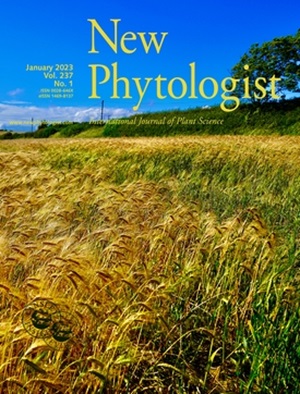Functional dissection of three pollen-side quantitative trait loci against multiple stylar unilateral incompatibility mechanisms in Solanum pennellii LA0716
IF 8.3
1区 生物学
Q1 PLANT SCIENCES
引用次数: 0
Abstract
- In Solanum pennellii LA0716, three stylar UI (sui) factors and one pollen UI (pui) factor were shown to be involved in S-RNase-independent unilateral incompatibility (UI). However, additional pui factor(s) and the antagonistic relationships among pui and sui factors remain to be investigated.
- Quantitative trait loci (QTL) mapping, functional and genetic analysis of LA0716-based crosses, and integrated multi-omics data are used to identify pui QTLs and functionally dissect pui QTLs from various types of stylar UI.
- In addition to the reported pui10.1 (SpFPS2), two pui QTLs (pui6.2 and pui12.1) were identified. In LA0716 styles, the three pui loci additively attenuate stylar UI, among which pui6.2 and pui12.1 appear to antagonize the sui factor, SpHT, via independent mechanisms. Furthermore, pui12.1′s function was found to be conserved in the SC styles of Solanum habrochaites LA0407 and Solanum chmielewskii LA1028. Candidate genes linked to pui6.2 and pui12.1 are identified for further analysis.
- This study reveals several mechanisms for three newly described types of stylar UI and the corresponding pui QTLs in LA0716, which advance our understanding of the complex genetic mechanisms underlying UI in the tomato clade.
求助全文
约1分钟内获得全文
求助全文
来源期刊

New Phytologist
生物-植物科学
自引率
5.30%
发文量
728
期刊介绍:
New Phytologist is an international electronic journal published 24 times a year. It is owned by the New Phytologist Foundation, a non-profit-making charitable organization dedicated to promoting plant science. The journal publishes excellent, novel, rigorous, and timely research and scholarship in plant science and its applications. The articles cover topics in five sections: Physiology & Development, Environment, Interaction, Evolution, and Transformative Plant Biotechnology. These sections encompass intracellular processes, global environmental change, and encourage cross-disciplinary approaches. The journal recognizes the use of techniques from molecular and cell biology, functional genomics, modeling, and system-based approaches in plant science. Abstracting and Indexing Information for New Phytologist includes Academic Search, AgBiotech News & Information, Agroforestry Abstracts, Biochemistry & Biophysics Citation Index, Botanical Pesticides, CAB Abstracts®, Environment Index, Global Health, and Plant Breeding Abstracts, and others.
 求助内容:
求助内容: 应助结果提醒方式:
应助结果提醒方式:


